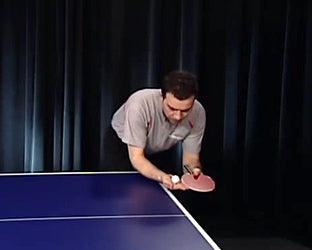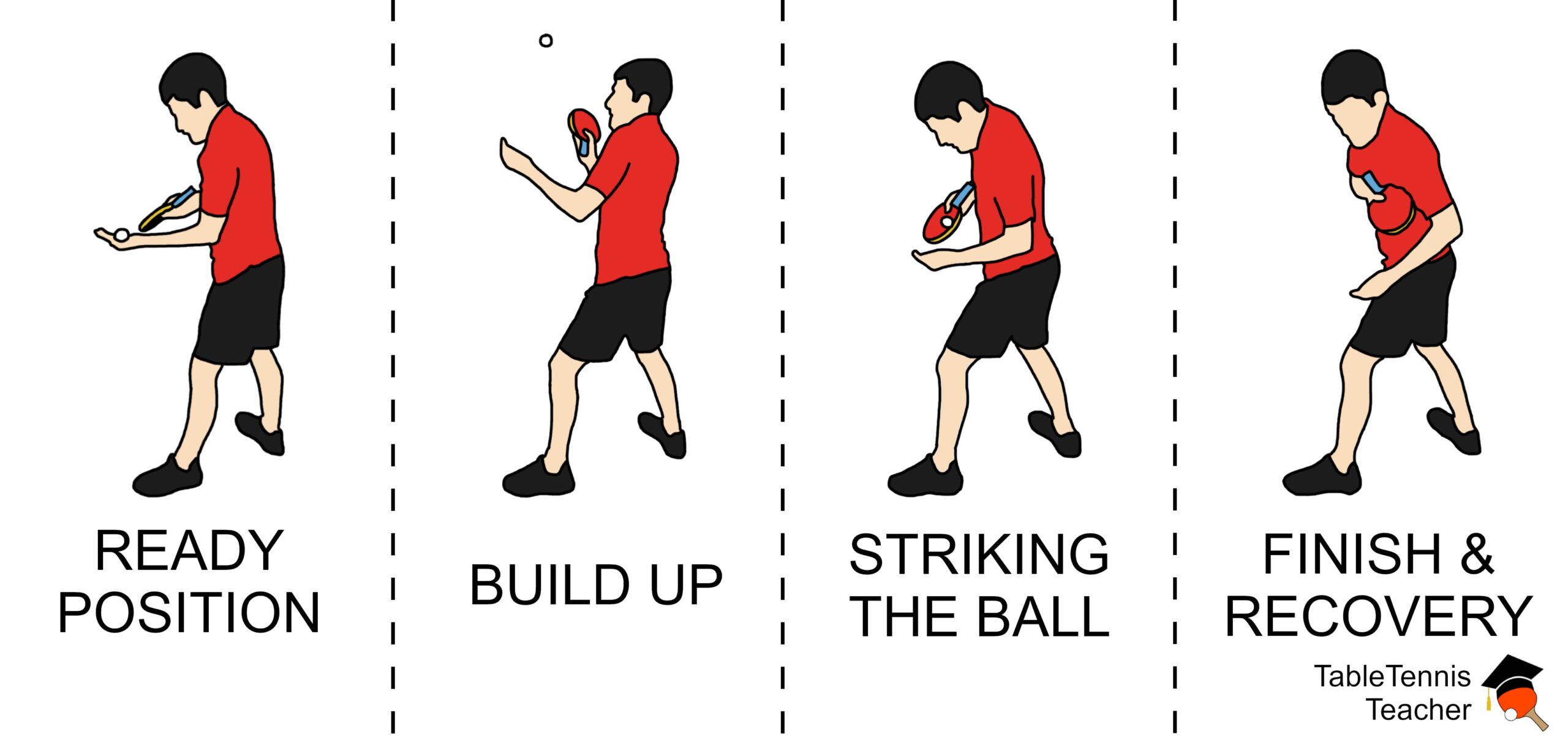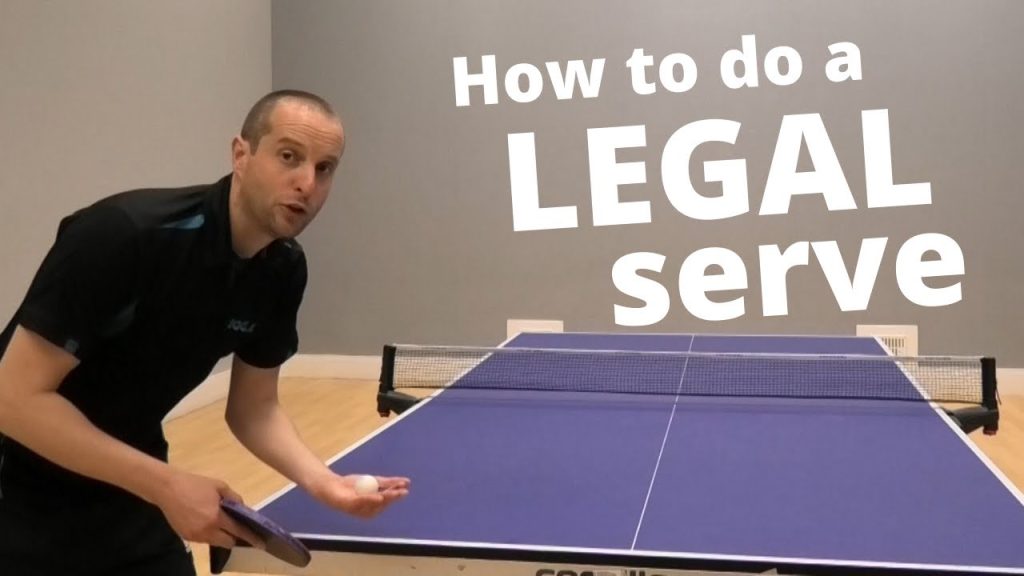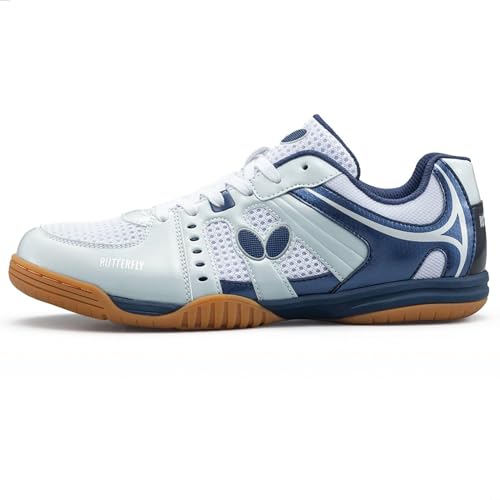Serving in ping pong is crucial. It sets the tone for the game.
Knowing how to serve properly can give you an edge over your opponent. In this blog post, we’ll explore the essential techniques to serve effectively in ping pong. Whether you’re a beginner or looking to refine your skills, understanding the fundamentals of serving can greatly improve your gameplay.
A good serve isn’t just about getting the ball over the net; it’s about strategy, placement, and spin. By mastering these elements, you can gain control of the game right from the start. Ready to improve your ping pong serve? Let’s dive in!

Credit: www.killerspin.com
Basics Of Ping Pong Serve
Mastering the serve in ping pong is crucial to gaining an advantage over your opponent. The serve sets the tone for the rally, and a well-executed serve can win you points outright. Here, we break down the basics of a ping pong serve, covering essential elements like grip, stance, and ball toss technique.
Grip And Stance
Your grip on the paddle influences your serve’s accuracy and spin. Most players use either the shakehand grip or the penhold grip. Find which grip feels more comfortable for you.
Stance is equally important. Stand with your feet shoulder-width apart. Position your body at a 45-degree angle to the table. Your weight should be on the balls of your feet, ready to shift as needed.
Here is a quick summary:
| Grip | Stance |
|---|---|
| Shakehand or Penhold | Feet shoulder-width apart |
| Comfortable and firm hold | 45-degree angle to the table |
| Weight on the balls of your feet |
Ball Toss Technique
The ball toss is a critical part of your serve. Hold the ball in your free hand. Toss it at least six inches in the air. Ensure the toss is vertical and controlled.
Make sure not to spin the ball with your fingers. A straight toss helps you predict the ball’s path and hit it accurately.
Steps for a perfect ball toss:
- Hold the ball in your open palm.
- Toss the ball straight up.
- Keep the toss at least six inches high.
- Ensure no spin on the ball.
Practice these basics to improve your ping pong serve. The right grip, stance, and ball toss can make a significant difference.

Credit: tabletennisteacher.com
Types Of Serves
Understanding the different types of serves in ping pong can elevate your game. Each serve has unique characteristics. This can confuse your opponent. Let’s explore the three main types of serves: Topspin, Backspin, and Sidespin serves.
Topspin Serve
The topspin serve is a powerful option. It makes the ball spin forward. This spin causes the ball to dip quickly. Your opponent may struggle to return it. This serve can also help you control the speed of the game. Use a quick wrist action to generate topspin. Practice this serve often to perfect it.
Backspin Serve
The backspin serve is another essential serve. It makes the ball spin backward. This spin makes the ball slow down. Your opponent may find it hard to lift the ball over the net. This serve is effective for defensive play. To perform it, brush the ball with a downward motion. This creates the necessary spin.
Sidespin Serve
The sidespin serve adds a twist to your game. The ball spins sideways. This makes it curve to the left or right. Your opponent might misjudge the ball’s direction. This serve can be very deceptive. Use a side-sweeping motion to create sidespin. Practice aiming the ball to different parts of the table.
Mastering Spin
Serving in ping pong with spin can confuse your opponent. It adds an unpredictable element to the game. To master spin, you need to understand both generating spin and reading your opponent’s spin. This will give you an advantage.
Generating Spin
To generate spin, you need to brush the ball with your paddle. There are different types of spins you can use:
- Topspin: Brush the ball upwards.
- Backspin: Brush the ball downwards.
- Sidespin: Brush the ball sideways.
Here are some tips to generate effective spin:
- Hold your paddle loosely.
- Use your wrist to add spin.
- Contact the ball at the right angle.
Practice these techniques regularly. Over time, your spin will improve.
Reading Opponent’s Spin
Understanding your opponent’s spin is crucial. It helps you return the ball effectively. Here are some pointers:
| Type of Spin | How to Read |
|---|---|
| Topspin | Ball bounces higher and moves faster. |
| Backspin | Ball bounces lower and slows down. |
| Sidespin | Ball curves to one side. |
Observe your opponent’s paddle movement. This will give you clues about the spin. Watch the ball’s trajectory closely. This will help you anticipate the spin.
Practicing reading spin will improve your reflexes. Your returns will become more accurate.
Placement Strategies
Mastering placement strategies in ping pong can significantly improve your serve. Correct placement of the ball can keep your opponent off balance. It’s a skill that can give you an edge in competitive matches.
Targeting Weaknesses
Identify your opponent’s weak spots. Some players struggle with backhand returns. Aim your serve to their backhand side. Others might have trouble with low, spin-heavy serves. Exploit these weaknesses. Use serves that they find difficult to return.
- Backhand side
- Close to the net
- Deep into the corners
Varying Serve Locations
Don’t be predictable. Change your serve locations often. This keeps your opponent guessing. Use a combination of short and long serves. Place some serves close to the net. Then, switch to deep serves to the corners.
| Serve Type | Location |
|---|---|
| Short Serve | Close to the net |
| Long Serve | Deep corners |
| Sidespin Serve | Wide angles |
Mixing up your serve locations is key. Your opponent will find it hard to predict your next move.
Advanced Serve Techniques
Ping pong serves are vital. Mastering them can elevate your game. Advanced serve techniques help you control the game. They make it harder for your opponent to return the ball. Here are some advanced serves you can learn.
The Pendulum Serve
The pendulum serve is common. It confuses opponents with spin. Follow these steps to perform it:
- Stand sideways to the table.
- Hold the racket in front of you.
- Swing your racket like a pendulum.
- Hit the ball at the peak of the swing.
This serve can have topspin, backspin, or sidespin. Change the spin to confuse your opponent. Focus on your wrist movement. This affects the spin and speed.
The Tomahawk Serve
The tomahawk serve is powerful. It adds a lot of spin to the ball. Follow these steps to perform it:
- Stand at the end of the table.
- Hold your racket like a tomahawk.
- Bring your racket down and across your body.
- Hit the ball with a brushing motion.
This serve can have topspin or sidespin. The brushing motion creates the spin. Practice this serve to control the spin and speed. It makes it harder for your opponent to return the ball.
Both of these serves require practice. Focus on your technique. This helps you deliver effective serves. Advanced serves can give you an edge in ping pong.

Credit: www.wikihow.com
Serve And Follow-up
The serve in ping pong is not just about getting the ball in play. It’s the start of a strategic game plan. A good serve sets the stage for your next move. It can give you control of the game.
Anticipating Returns
After serving, be ready for your opponent’s return. Watch their paddle. It tells you where the ball might go. Stay on your toes. Move quickly to react to different angles and speeds.
Expect the unexpected. Strong players mix up their returns. They aim to keep you guessing. Stay focused. This helps you prepare for any type of shot. A quick reaction can turn the tide in your favor.
Setting Up Attacks
A well-placed serve can set up your next attack. Aim for their weak spots. This gives you a better chance to strike. Use spin to make the ball hard to return. This often forces weak returns.
After serving, be ready to follow up with a strong shot. Position yourself well. Be aggressive but stay balanced. A good follow-up can put your opponent on the defensive. Keep the pressure on them.
Common Mistakes
Playing ping pong is fun, but serving can be tricky. Many players make common mistakes that affect their performance. Understanding these errors can help you improve your game.
Avoiding Faults
Faults are common in ping pong serves. They can cost you points. Here are some tips to avoid faults:
- Watch your toss: The ball must be tossed at least 6 inches.
- Keep your hand open: Use an open hand to toss the ball.
- Serve behind the table: Your serve must start behind the table.
- Don’t hide the ball: Keep the ball visible to your opponent.
Improving Consistency
Consistency in serving is key to success. Here are ways to improve:
- Practice regularly: Consistent practice improves muscle memory.
- Focus on technique: Proper technique reduces errors.
- Use a routine: Develop a serving routine for better focus.
- Stay relaxed: Relaxed muscles perform better.
Avoiding faults and improving consistency will enhance your ping pong serve. Practice these tips to see progress.
Practice Drills
Practicing your serve in ping pong can improve your game significantly. By using specific practice drills, you can develop consistency, accuracy, and power. These drills can be done alone or with a partner. Let’s explore some effective drills.
Solo Drills
Practicing alone can be very effective. Here are some drills to try:
- Target Practice: Set up targets on the opposite side of the table. Try to hit them with your serve. This improves accuracy.
- Spin Control: Focus on different types of spin. Serve with topspin, backspin, and sidespin. This helps you understand how spin affects the ball.
- Consistency Drill: Serve 20 balls in a row. Count how many land in the desired area. Aim to improve your score each time.
Partner Drills
Practicing with a partner adds a new level of challenge. Here are some drills:
- Return Practice: Your partner returns your serves. This helps both of you improve. You get to practice your serve, and your partner practices their returns.
- Serve and Attack: Serve the ball, and then your partner attacks. This simulates real-game situations. It helps you prepare for the next shot.
- Randomized Serves: Serve to different spots on the table randomly. Your partner tries to guess and return. This keeps your partner on their toes and tests your unpredictability.
Using these drills regularly will improve your ping pong serve. Remember to focus on technique, consistency, and variation. Happy practicing!
Frequently Asked Questions
What Is The Correct Way To Serve In Ping Pong?
To serve correctly in ping pong, hold the ball flat on your palm, toss it at least 6 inches, and strike it so it bounces on your side first and then over the net.
How High Should You Toss The Ball In Ping Pong?
You should toss the ball at least 6 inches high during a serve. This ensures a legal serve according to official rules.
Can You Serve Overhand In Ping Pong?
No, you cannot serve overhand in ping pong. The serve must start with the ball resting freely on an open palm and be struck from below.
What Happens If You Miss The Ball While Serving?
If you miss the ball while serving in ping pong, your opponent gets a point. It’s considered a fault serve.
Conclusion
Mastering your ping pong serve takes practice and patience. Focus on your grip and stance. Keep your serves varied to challenge your opponent. Accuracy is more important than power. Watch professional players for tips and techniques. Regular practice helps improve your skills.
Remember, serving well sets the tone for the game. Enjoy the process and have fun playing!



